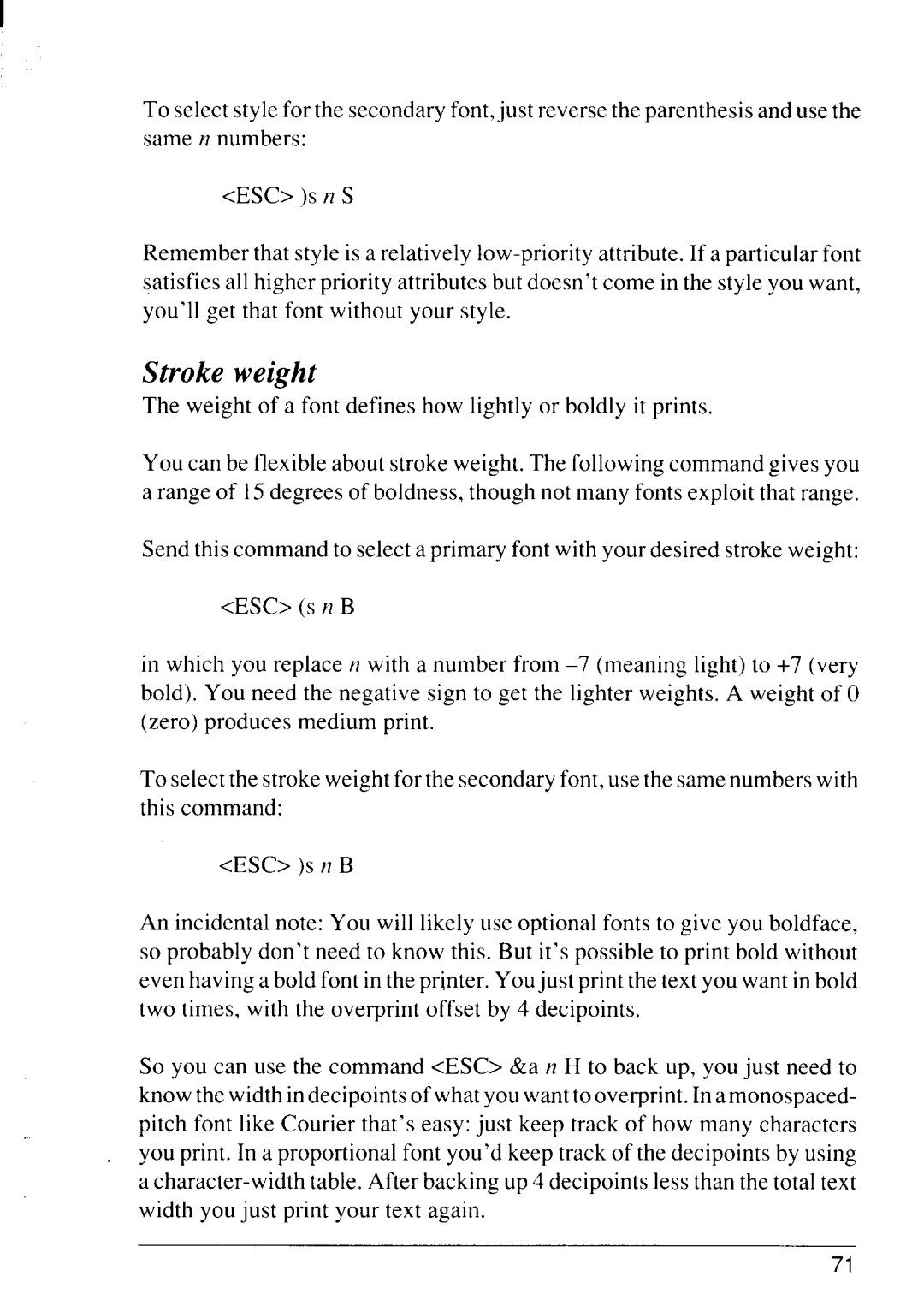
To select style for the secondary font,just reverse the parenthesis and use the same n numbers:
<ESC> )S n S
Remember that style is a relatively
Stroke weight
The weight of a font defines how lightly or boldly it prints.
You can be flexible about stroke weight. The following command gives you a range of 15degrees of boldness, though not many fonts exploit that range.
Send this command to select a primary font with your desired stroke weight:
<ESC> (S n B
in which you replace n with a number from
To select the stroke weight for the secondary font, use the same numbers with this command:
<ESC> )S n B
An incidental note: You will likely use optional fonts to give you boldface, so probably don’t need to know this. But it’s possible to print bold without even having a bold font in the printer. You just print the text you want in bold two times, with the overprint offset by 4 decipoints.
So you can use the command <ESC> &a n H to back up, you just need to know the width in decipoints of what you want to overprint. In a monospaced- pitch font like Courier that’s easy: just keep track of how many characters you print. In a proportional font you’d keep track of the decipoints by using a
71
